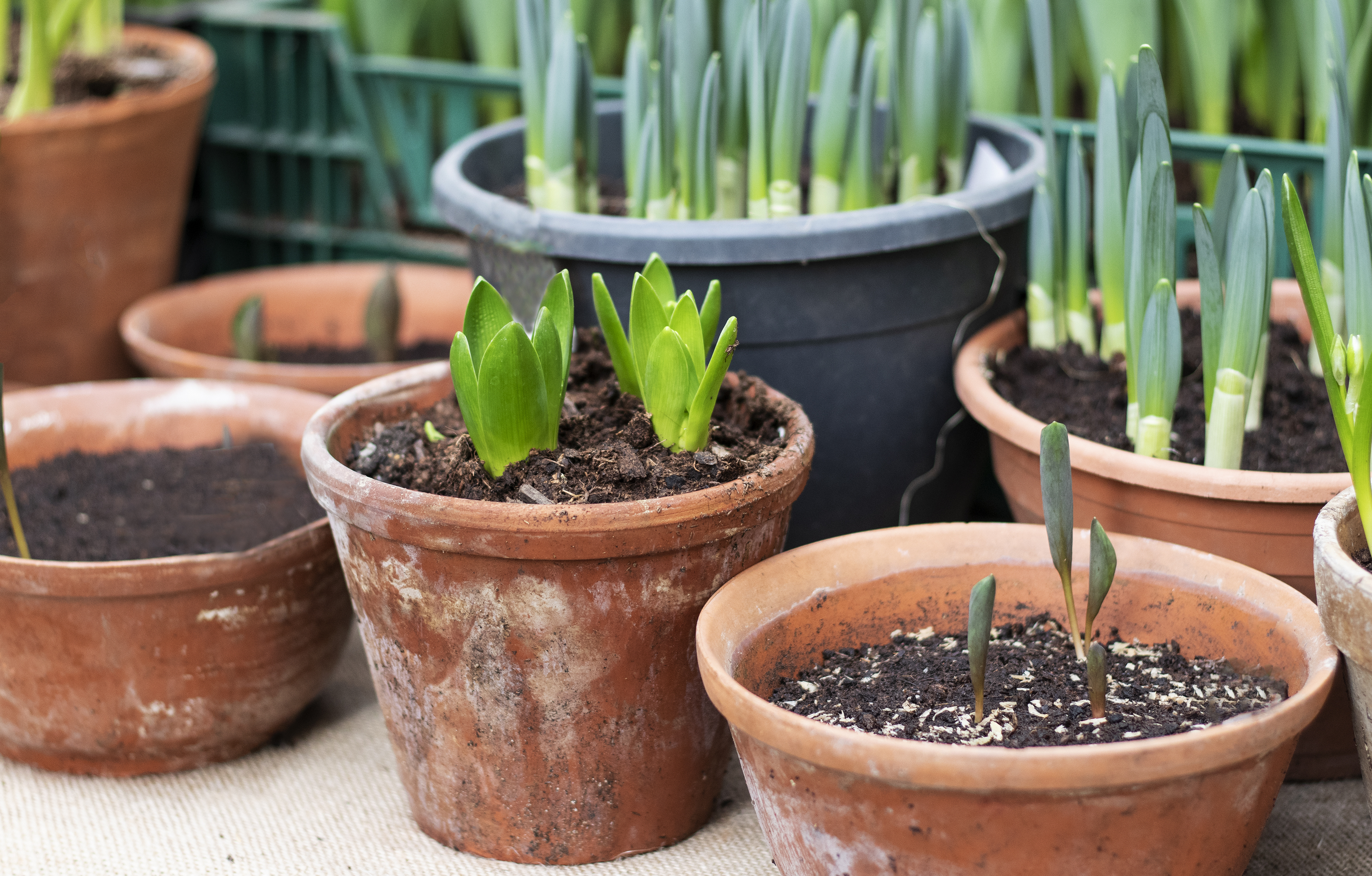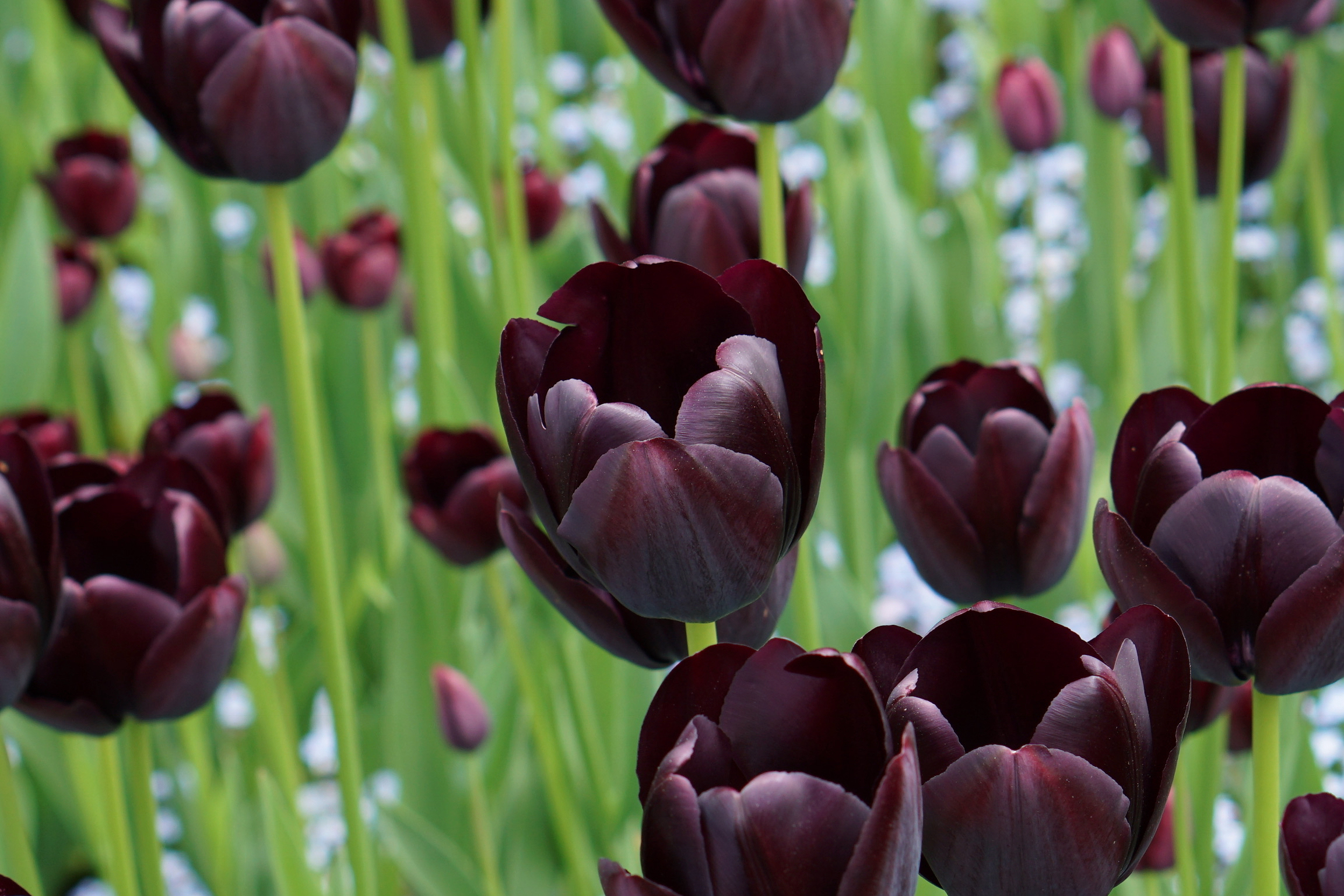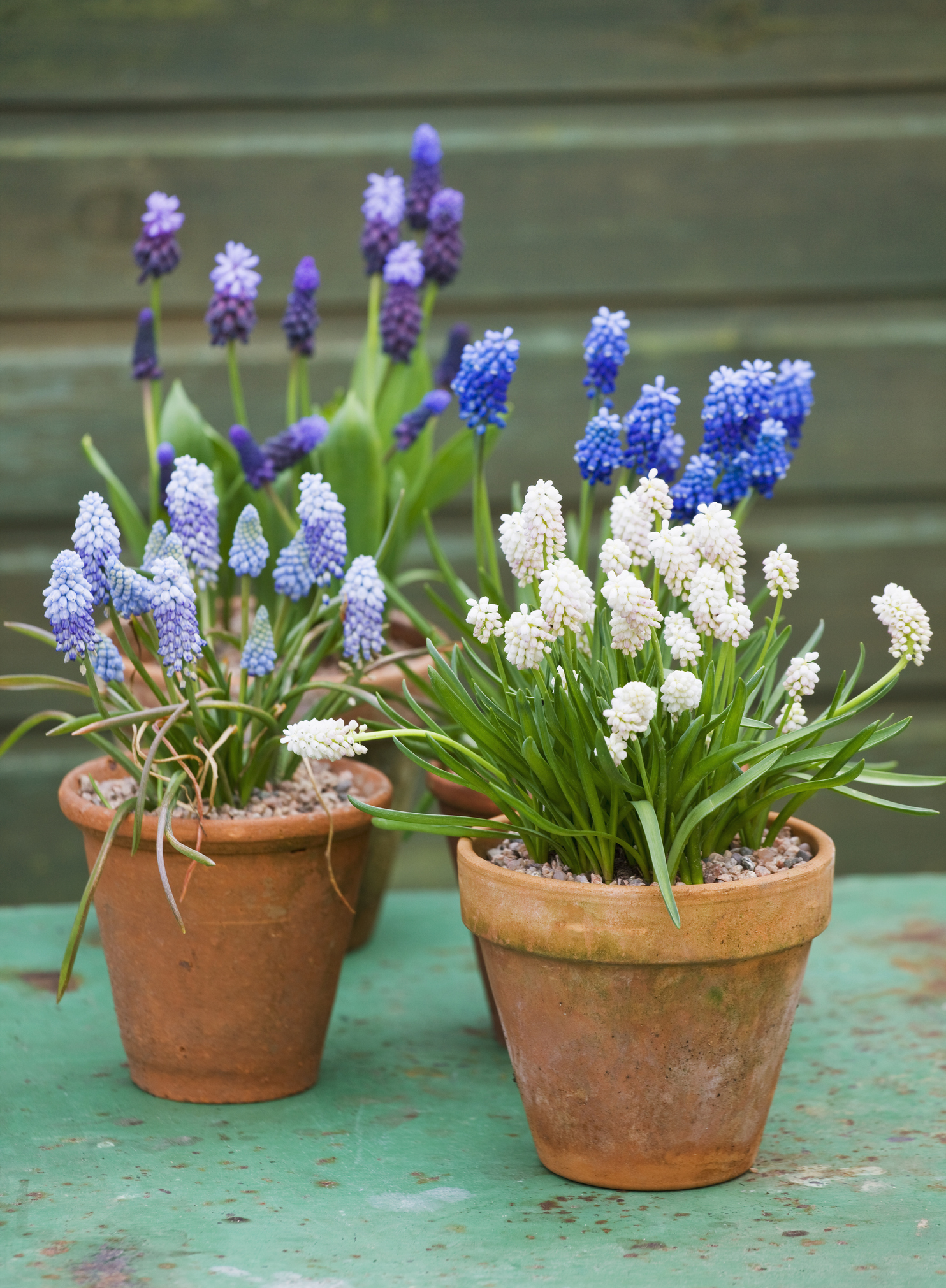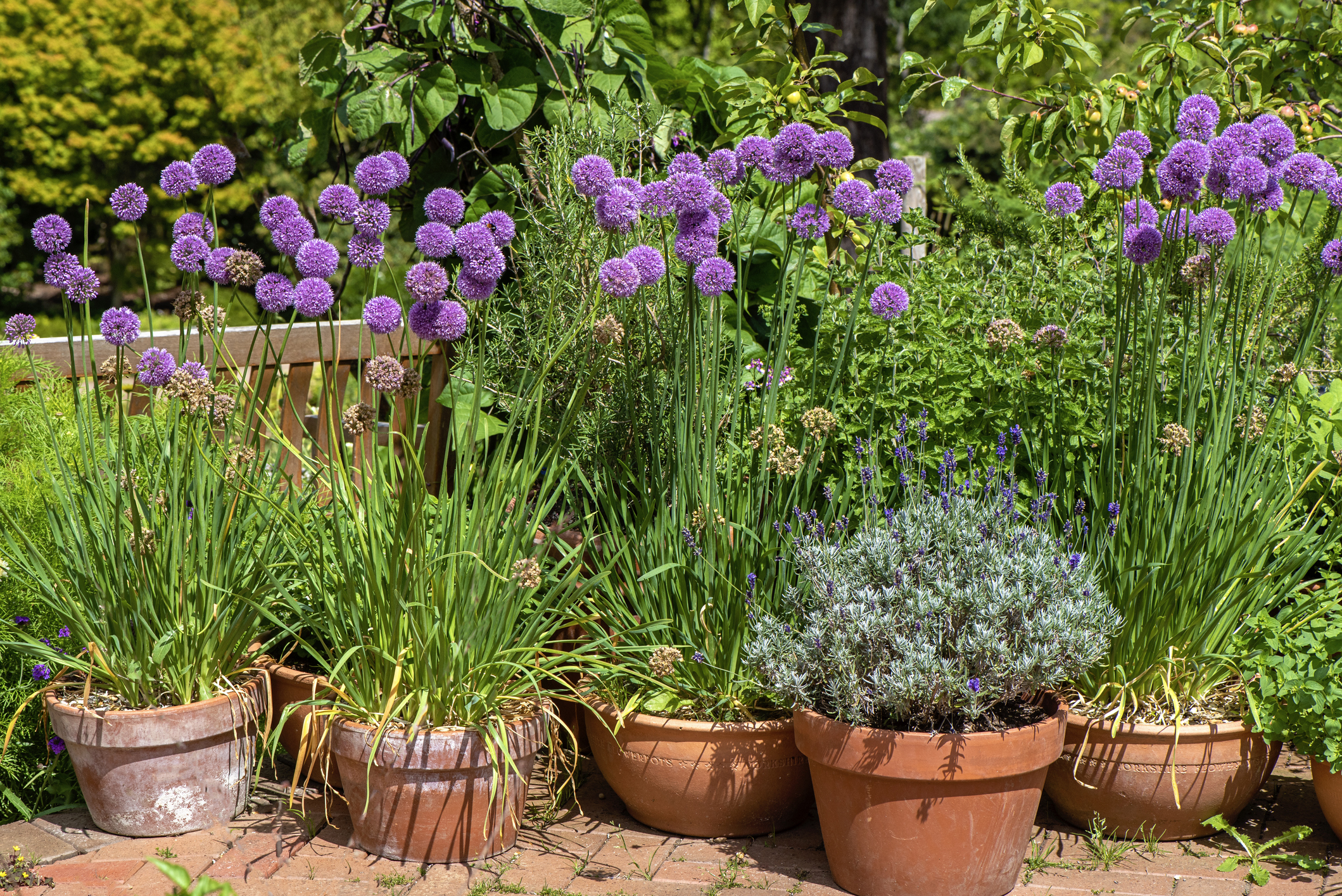
Is it too early to start prepping for spring? Absolutely not! When it comes to gardening, fail to plan = plan to fail — which means getting ahead of your spring bulb planting schedule now.
With so many different bulbs on offer and the temperatures changing drastically between regions, how do you know which spring bulbs to plant in fall and when should you plant them? From hardiness zones, to flowering time and positioning, there’s a lot to consider when deciding which bulbs to use in your garden designs. But with our handy guide, it doesn’t need to be complicated.
We’ve drilled down the best time to plant spring bulbs for each hardiness zone so you don’t have to. It’s the ultimate cheat sheet for super impressive spring containers and beds.
Hardiness Zone 3-5: Plant late September to early October

If you’re in USDA hardiness zones 3-5, you’re definitely used to some serious temperature drops!
In these zones, it’s all about choosing bulbs that can withstand hard winter frosts and burst into life in spring without the need for extreme heat or humidity.
Generally, in these freezing temperatures, it’s best to plant bulbs in late September or early October while the ground isn’t frozen and is still workable.
But which bulbs should you be planting in these colder zones? According to these bulb planting tips from horticulturalist, author, and botanical expert Leslie Halleck "Bulbs that require a chilling period (vernalization) to bloom, such as tulips and hyacinth, typically perform more reliably in colder climates. Daffodils are also great performers in cold climates, but don't require vernalization to bloom. Lily of the Valley and snowdrops are also good cold climate performers."
When planting your tulips, just be sure to plant the bulbs deeper than you think. This will allow the stems to be supported by the surrounding earth when growing and prevent strong winds from snapping the vulnerable stems – especially important for any balcony containers or coastal porches that have to tolerate a fair breeze!
Our top tulip bulb choice? Tulip ‘Queen of the Night’, which you can buy from Walmart. A refreshing alternative to other sugary pastel-toned tulips, Queen of the Night has intensely dark petals that contrast beautifully against its green foliage. Plus, it’s one of the latest tulips to bloom in the season, making it ideal for a long-lasting display.
Hardiness Zone 6: October

If you’re in USDA zone 6 (we’re looking at you Ohio and Pennsylvania), October is the ideal time to plant your bulbs. But as long as there aren’t any sudden cold snaps forecast you should be fine to plant them into November – just don’t leave it much longer than that!
"Many perennial bulbs, such as daffodils or grape hyacinth, can be planted through the end of October in many gardening regions," says expert Leslie. "It may be appropriate for you to plant tulips in October in your area as well."
As horticultural guru Leslie previously mentioned, when to plant tulips in containers, or whichever bulb you've chosen, comes down to vernalization. Vernalization is the process where cold temperatures force a plant or bulb into dormancy before the warmer spring weather triggers the plant into growth. Planting the bulbs too early can cause them to grow prematurely and result in frost-damaged foliage. Too late and you may not have left enough time for vernalization to take place.
Our pick? This Delft Graphe Hyacinth bulb, from Amazon, is particularly beautiful.
Zone 7 & 8: Early November

In zones 7 and 8 where minimum temperatures can be 0-20°F, November is the perfect time to start planting your spring bulbs, however, be mindful of your bulb choices.
As we know now, vernalization is crucial for some bulbs. Faking this process at home can be done if your temperatures won’t allow for a period of dormancy (especially in zones 7 to 11), but if you’d rather avoid this certain bulbs will make brilliant displays without the need for refrigeration.
Alliums are a great place to start for warmer zones. We especially love Allium 'Summer Drummer', which you can find bulbs for at Walmart. Much like the popular Allium 'Purple Sensation' but smaller, these tall popsicle-shaped flowers reach 4-6ft tall in garden beds, plus they're brilliant plants for butterflies, as their flowers are a feast for pollinators. Suitable for zones 3-8, these long-lasting blooms will appear in late spring and last well into summer. Just be sure to stake them as they’re growing if your garden or balcony is exposed to high winds, leave it too late and you’ll be left with snapped stems!
Zone 9-11: Mid-late December
For zones 9-11 timing is especially important for spring bulbs. For these areas, it’s best to stick to mid to late December and venture into the world of bulb chilling to get the best results.
Chilling bulbs is relatively straightforward, you simply place the bulbs inside an airtight container and cool them in your home refrigerator for 8 to 10 weeks – the fridge door compartment is our suggestion, as some fruit and veg can emit ethylene gas which isn’t healthy for bulbs. The cold fridge temperature will trick the bulbs into dormancy, ready for the naturally warm outside temperatures to trigger the bulbs into growth when you plant them outside.
Though chilling bulbs is a great way to grow cold-reliant flowers like tulips and hyacinths in warmer zones, many other bulbs don't require a cold spell to get growing. In this respect, it's the time when to plant daffodils bulbs, even without forcing them in the fridge.
Varieties like narcissus ‘Apricot Whirl’, which you can find at Easy to Grow Bulbs, do just fine in zones 4-10 (or up to zone 7 in the south). These pretty blooms feature large white petals with an inner peach-toned ruffle and yellow stamen – perfect for a more traditional spring pastel display!
How to plant a bulb lasagne for spring
Bulb lasagnas are a hugely popular spring container design technique that you can plant up now (with zone-appropriate bulbs) and enjoy a continuous display of flowers until the end of spring.
As Leslie explains, "Simply put, for a bulb lasagne container plant the larger bulbs, such as tulips, at the lower level of the container, and layer bulbs by decreasing size. Daffodils or ranunculus in the middle; tiny bulbs, such as crocus, will be on top about 3 inches under the top of the soil surface. Bulbs are usually categorized as early, mid, or late-season bloomers, so choose a mixture for an extended bloom season, or the same season for blooms all at once.”
But a word of warning from Leslie for container-grown bulbs – “Remember that bulbs in above-ground containers will be less insulated from intense temperature shifts, both colder and warmer, so they may need added cold protection in the winter. They will likely bloom earlier than your in-ground bulbs, so adjust your planting times accordingly.”
You don’t have to put up with bare containers while you’re waiting for your bulbs to sprout though. Instead, plant a few winter annuals on top, like winter pansies, violas, or cyclamen. After winter they will naturally die back and your bulbs will have no trouble in bursting through them to reveal their blooms.







